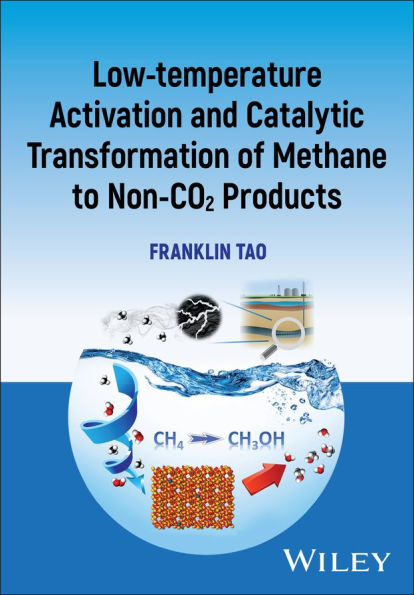Methane is among our crucial natural resources, with myriad applications both domestic and industrial. Atmospheric accumulation of methane, however, is one of the major drivers of climate change. The increasingly urgent search for a sustainable world demands methods for the transformation of methane that maximize its potential as a source of energy and chemical production without a harmful effect on the atmosphere and local environment.
Low-Temperature Activation and Catalytic Transformation of Methane to Non-CO2 Products introduces a growing field in chemistry, chemical engineering, and energy sciences. Beginning with an overview of methane formation and its significance in chemical production, the book surveys historical transformations of methane to value-added chemicals and explains why a low-temperature route of methane transformation is necessary and significant. It then discusses existing findings in low-temperature activation and catalytic transformation, including activations with free standing single-atom cations, free standing MO+ clusters, and broadly defined M-O clusters encapsulated in zeolite, and catalytic oxidation by molecular catalysts, metal atoms anchored in zeolites, and metal sites openly exposed on alloy nanoparticles. The book concludes with a chapter discussing current challenges and promising solutions to tackle these challenges.
Low-Temperature Activation and Catalytic Transformation of Methane to Non-CO2 Products readers will also find:
- Coverage of concepts, perspectives, and skills required for those working in this important field in catalysis research.
- Exemplified experimental and computational results throughout, derived from existing research literature.
- Detailed discussion of low-temperature transformation methods incorporating catalysts including zeolite, gold-palladium, and many more.
Low-Temperature Activation and Catalytic Transformation of Methane to Non-CO2 Products is ideal for experimentalists, researchers, scientists, and engineers working in methane transformation, heterogeneous catalysis, homogeneous catalysis, sustainable chemistry, surface science, climate change mitigation, and related fields.
Methane is among our crucial natural resources, with myriad applications both domestic and industrial. Atmospheric accumulation of methane, however, is one of the major drivers of climate change. The increasingly urgent search for a sustainable world demands methods for the transformation of methane that maximize its potential as a source of energy and chemical production without a harmful effect on the atmosphere and local environment.
Low-Temperature Activation and Catalytic Transformation of Methane to Non-CO2 Products introduces a growing field in chemistry, chemical engineering, and energy sciences. Beginning with an overview of methane formation and its significance in chemical production, the book surveys historical transformations of methane to value-added chemicals and explains why a low-temperature route of methane transformation is necessary and significant. It then discusses existing findings in low-temperature activation and catalytic transformation, including activations with free standing single-atom cations, free standing MO+ clusters, and broadly defined M-O clusters encapsulated in zeolite, and catalytic oxidation by molecular catalysts, metal atoms anchored in zeolites, and metal sites openly exposed on alloy nanoparticles. The book concludes with a chapter discussing current challenges and promising solutions to tackle these challenges.
Low-Temperature Activation and Catalytic Transformation of Methane to Non-CO2 Products readers will also find:
- Coverage of concepts, perspectives, and skills required for those working in this important field in catalysis research.
- Exemplified experimental and computational results throughout, derived from existing research literature.
- Detailed discussion of low-temperature transformation methods incorporating catalysts including zeolite, gold-palladium, and many more.
Low-Temperature Activation and Catalytic Transformation of Methane to Non-CO2 Products is ideal for experimentalists, researchers, scientists, and engineers working in methane transformation, heterogeneous catalysis, homogeneous catalysis, sustainable chemistry, surface science, climate change mitigation, and related fields.

Low-temperature Activation and Catalytic Transformation of Methane to Non-CO2 Products
304
Low-temperature Activation and Catalytic Transformation of Methane to Non-CO2 Products
304Hardcover

Product Details
| ISBN-13: | 9781394193257 |
|---|---|
| Publisher: | Wiley |
| Publication date: | 01/12/2026 |
| Pages: | 304 |
| Product dimensions: | 6.50(w) x 1.50(h) x 9.50(d) |
